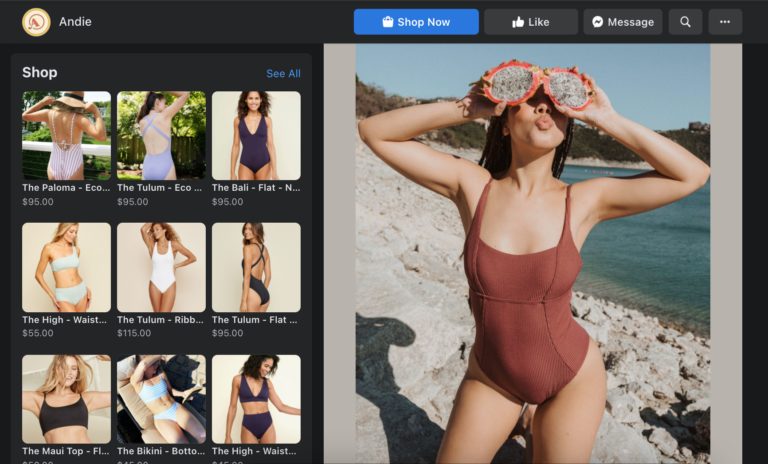8 Marketing Trends You Need to Know in 2022

The last couple of years have certainly been a bumpy ride for everyone, with marketers feeling some unique growing pains from emerging tech and a renewed focus on individual user privacy. It’s safe to say your life (my life, their life, all of our lives?) has been wicked exhausting in 2021.

Now that we’re starting to get a hang of whatever this “new normal” is, it’s time for you to get proactive about the future of your marketing campaigns. Why? Because more changes are on the horizon, and if you’re just playing defense, your competition is going to clobber you.
We’re tapping into our third eye and looking through our thoroughly disinfected crystal ball to give you a peek at the top marketing trends in 2022, and how they might affect your advertising campaigns.
Learn More: Social Media Video Ad Specs & Placements Guide
1. Third-Party Cookies Will Be Toast
We’ve been waiting for it, we’ve known it’s coming. And in 2022 and 2023, the third-party cookie is coming to an end, which will have a transformative effect on web marketing and advertising. Consumers are sick of being tracked and governments around the world have responded to their privacy concerns.
Savvy marketers have been preparing for this for some time. Many companies are using their own users’ data to power, essentially, their own social and ad networks. These include:
- Zoom, which is going to leverage its supercharged pandemic profile to push ads to its free tier of users
- Doordash, the food delivery service, which is launching its own ad platform
- Lowe’s, the homewares store, which is launching its own ad platform, too
These might seem like quirky moves, but if you think about it, you probably know your customers best. And they have already shown up for your product.
There are many subtle, smart maneuvers that advertisers are adopting following the demise of the third-party cookie. You as marketers can draw inspiration from them even before the last gasp of the third-party cookie.
According to the World Association of News Publishers, for example, the New York Times has already switched over to a system that targets users and subscribers based on what they are reading on the Times site and app.
The Times uses a system it calls “perspective marketing,” based on the emotions an article is predicted to provoke in readers. It can then match that emotion to one that marketers are looking to target. The Times has quite a granular list of emotions they believe their work inspires, including “inspired,” “angry,” “informed,” “adventurous,” and “hopeful.”
Wondering how the Times manages to target and predict these specific emotions? That leads us to our next marketing trend to watch in 2022.
GET SOME CONTEXT: Here’s a birds-eye view of everything that’s happened with Data Privacy in 2021.
2. Machine Learning Will Rise
The New York Times is using machine learning to track emotions and help advertisers target consumers. Consumers want to make changes in their lives, and the Times is also using machine learning to make use of what they call “motivation targeting.”
For example, it’s likely if someone is reading an article on how to budget better, or how to cook Szechuan beef, they are interested in products that support those goals. In many ways, marketing without third-party cookies is more intuitive, following consumers’ interests rather than their behavior. But content is complex and machine learning allows you to get a fast, more accurate picture of what a piece of writing (or music, or visual content) is conveying.
According to Forbes, there are even more creative ways of using machine learning. These include identifying patterns in consumer behavior and better understanding audience interactions.
LEARN ABOUT THE NEXT FRONTIER OF DATA DRIVEN MARKETING: Download our guide to Creative Analytics.
3. Diversity in Advertising is a Priority
Diversity isn’t just a fad. It’s here to stay. Studies have shown that diversity benefits workplaces. When it comes to Hollywood, the annual UCLA report on diversity shows that audiences are showing up for diverse casts like never before, whether they are watching in theaters or at home. You can even see for yourself how diversity casting has become a fact of life in entertainment by checking out the Netflix homepage, for example. What was a sea of white male faces has given way to far more diverse representation of genders and ethnicities.
When it comes to diversity advertising, it has to be achieved in a meaningful and substantial way. Diversity that feels phony, like lip service, or tone-deaf, like the infamous Kylie Jenner Pepsi ad featuring cops and protestors a few years ago can backfire and bring the kind of publicity you don’t want.
Diversity means embracing other points of view that have been sidelined over the past decades and centering them, rather than marginalizing them or including them in a perfunctory way.
To put it bluntly, from the point of view of business and marketers, consumers are a more racially and ethnically diverse group than ever.
Most entertainment and marketing works on the theory of identification. Simply, people like seeing themselves represented on screen and respond to depictions of life that feel realistic and true to their experience. So, as we head into 2022, ask how your brand can harness the power of diversity and identification, to reach new audiences in a meaningful way.
If you’re looking for inspiration, the best advice may be to walk around your neighborhood and get a sense of the different cultural groups where you live. If you’re looking for inspiration or campaigns that did a successful job, Adforum Magazine recently put together a list of their favorite successful diverse ad campaigns.
ARE YOU AN UNDERREPRESENTED CONTENT MAKER? Learn about grants and resources that can help level the field for you to make your mark.
4. Empathetic Ads Will Continue to Be Important
Empathy is big. We are living in highly polarized times, and marketers would do well for themselves — not to mention doing a favor to the broader culture — to create work that exhibits qualities of empathy. Thinkers like Brené Brown are popularizing their research, which emphasizes that empathy and vulnerability are powerful forces not only for society but for business. (Forbes noted this trend as far back as 2018, but given recent events, it seems even more keenly relevant than ever).
The four qualities of empathy are said to include:
- Being able to take another’s perspective
- Being able to withhold judgment
- Recognizing the emotion another person is expressing
- Making it clear you acknowledge and understand the emotions of the other person
How could you as a marketer incorporate these lessons into your work? That’s the interesting creative challenge that lies ahead.
Mostly, it means putting the customer first and understanding their pain points and unique needs. It could mean incorporating more open-mindedness into your messaging instead of the traditional top-down approach. It would certainly mean being more sensitive in your messaging, and less reliant on the shock-comedy that many marketers preferred in years past.
As the pandemic wanes (at least in some parts of the world) we are realizing that we are all connected, and all responsible for one another. Marketing has to reflect this changing zeitgeist.
If nothing else, when you’re getting the word out about your product, simply acknowledging what we’ve all been through can be a powerful way of acknowledging the experience of your target audience.
5. Directness and Utility Will Beat Cleverness
Sorry to the marketers who enjoy being clever. Right now, consumers actually don’t much like ads. Maybe it’s a result of the pandemic and all that screen time, maybe it’s the sheer volume of visual material we all have to process on a daily basis. But there is palpable consumer frustration with ads that don’t just convey the facts that are needed.
What are consumers looking for? Marketing Dive notes research from consulting firm PriceWaterhouseCoopers that “respondents valued ads that communicated convenience, knowledgeable and friendly service and efficiency.” This makes a lot of sense, given that we’ve been through a period that was the opposite of convenient and efficient.
Ads that communicate solidity and reliability have obvious appeal as a balm to the chaos and uncertainty of the last two years. The report goes on to say that “messages centered on fun, brand image and social responsibility saw considerably less favor, but remain some of the dominant tactics deployed in campaigns today.” Marketers are going to have to catch up quickly to this 2022 marketing trend.
If this urging to be direct seems to contradict the earlier pointer, which emphasized brand image and social responsibility, it doesn’t. The point is that consumers want something real and sustaining and are wary of fluff. Really, it ties into the marketing trend surrounding empathy and the need to respond to the deepest needs of consumers.
Need help making videos? See how our video production platform can help your business.
6. Brand Integration in Content Will Need to Be Better
With many more streaming and premium video on demand (PVOD) services gaining ground, it has become easier than ever for consumers to avoid ads, completely. The solution lies in brand integration in streaming video.
According to Nielsen, brand integrations in streaming video are actually highly effective at shifting consumer behavior. Of course, this integration needs to be accomplished in an artful way. Years ago, Mad Men achieved a brilliant feat in integrating products into the fabric of its storyline — like the Heineken beer Don Draper had to create a campaign for. While Mad Men‘s tone was often dark or ironic, it still performed the job of making Heineken (or any number of other brands, including Kodak) cool.
Too much brand integration can lead the audience to tune out completely. It’s important for marketers to get a sense of the overall picture — is your brand going to stand out in a meaningful way, or are there dozens of products being sold? Other possible drawbacks include a mismatch between your brand and the show it’s featured on. You’ll have to make sure your target audience is the same as that of the programming you’re involved with.
But that same Nielsen report points out that while radio and TV spots are still the most well-trusted real estate for advertising, “streaming and branded integrations are growing: in the first four weeks of being available on Netflix, seasons 1/2 of Cobra Kai integrated Enterprise, the car rental company, into their storyline,” and successfully delivered 8 million impressions to the exact demographic car renters covet.
The vibe of Cobra Kai — nostalgic, fun, and unapologetically entertaining — was also a perfect match to the kind of demo that wants to rent a car and take to the open road.
7. Social Selling Will Keep Streamlining Advertising
Apps like Instagram focus on beautiful clothes, destinations, and lifestyle choices. Small wonder, then, that 2022 advertising trends include social media becoming an even more powerful way of reaching consumers. This can be achieved through brands’ own accounts (ASOS has over 10 million followers on Instagram) or via influencers.
Influencer advertising is here to stay. Accounts like @thehappilyeva have hundreds of thousands of followers and sell their own brands and others. This could be due in part to the fact that their curators open up about the hardships of motherhood, the difference between real life and Instagram, and so on.

Many of these trends overlap, and indeed influencer and direct social advertising feed into the feeling of authenticity and seeing directly into someone’s life that consumers feel breeds trust. A study by Facebook underlines that “43 percent of 18-34-year-old fashion shoppers say they prefer a brand that shares their morals and values.”
There’s no better way of showing those morals and values than by showing your potential consumers exactly how you live, preferably while wearing beautiful clothes, and commenting on the difference between social media and real life. But that, too, resonates with potential consumers, who are dealing with similar issues in their lives.
Social media has proven a great leveler in society (in some ways, at least), and some sectors of the economy, like fashion and beauty, are more inclusive than ever before. The pandemic led to consumers spending even more time in front of screens and phones, and smart marketers will tap into the seamless way that our lives intersect with our phones and devices.
FREE GUIDE: Get some concrete strategies for tackling eCommerce Video in 2022.
8. The Ad World Will Explode
This past year has upended more than just data privacy regulations. Since Q1 of 2021, according to TVision, time spent on AVOD (Advertising Video on Demand) platforms have surpassed SVOD (Subscription Video on Demand) by 6%. This shouldn’t be too surprising. The last two years have been one marked by precarious economic situations for households across the world, so naturally they found places to trim their monthly budget, and historically that means entertainment goes on the chopping block. But AVOD platforms have built out a robust content library, allowing households to still enjoy streaming content without the economic barrier of a subscription.
Naturally, advertisers have taken notice. According to the December MAGNA Global Ad Forecast, ad revenues grew by 22% to $710 billion in 2021, larger than pre-COVD levels, and that is only predicted to steadily increase across digital and traditional forms of advertising.
But the most important move you can make in 2022 is to double down on Connected TV advertising. It’s reported to account for 10% of total television ads in 2022, and that is expected to double in less than five years.
WRAP YOUR HEAD AROUND ALL THOSE STREAMING ACRONYMS: Learn the A to Z of CTV and OTT.
Conclusion: Where Marketing Trends Are Headed in 2022
If 2021 took us from chaos to an increasing sense of normalcy, 2022 brings with it a greater sense of hope and optimism. Privacy concerns are taking away the third-party cookie. An increasing sense of consumers wanting to align their morals and values with the brands they support will continue to spur your potential audience to seek greater diversity, authenticity, and utility.
If you’re looking to stay on top of this rapidly changing landscape, reach out to QuickFrame to make sure you stay on top of the video marketing and general marketing trends in 2022 and beyond.
Do More with Video
Learn how we can help you produce more quality videos affordably and at scale.


